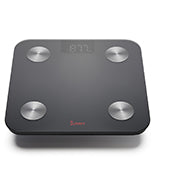Let’s get one thing clear right from the start: every body is a summer body.
Yes, yours too. Regardless of size, shape, curves, or stretch marks, your body deserves sunshine, beach days, and swimsuits without apology or comparison. The idea that you must shrink, tighten, or sculpt yourself into some narrowly defined version of “ready” is not just outdated — it’s harmful.
But if you’re here because you’re looking to feel more energized, confident, and strong by summer, then we’re right here with you. Whether your motivation is finally sticking to a fitness routine, building core strength, or just not feeling winded chasing your dog around the park, what matters is that your goal comes from a place of self-respect, not self-punishment.
Forget Quick Fixes. Think Long-Term Empowerment.
With summer on the horizon, it’s easy to be pulled toward extreme measures such as crash diets, two-a-day workouts, or supplement overload.
Spoiler alert: those methods don’t work — not for long, anyway. Worse, they often damage your metabolism, mindset, and relationship with your body.
Instead, let’s shift the focus. Getting fit for summer is about enhancing the body you already have — building strength, stamina, and self-trust. The summer body you’re after? It’s built on small, sustainable actions done consistently over time.
So, where do you start? Right here, with a lifestyle overhaul grounded in realistic, joyful movement.
1. Build a Consistent Movement Habit
Aim for 3–5 sessions per week, mixing strength, cardio, mobility, and active rest. Start with short, doable workouts like the SunnyFit app’s 10–20 minute options and grow from there.
Pro tip: Schedule your workouts like meetings. Whether you opt for morning movement or lunch break lifts, set a reminder, and treat it like a date with your future self.
2. Prioritize Whole Foods
Rather than restricting or cutting entire food groups, focus on adding nourishment. Prioritize lean protein, fiber-rich carbs, and healthy fats to fuel your body and support recovery.
Sustainable tip: From the wisdom of Michael Pollan: "Eat food. Not too much. Mostly plants." Stick to foods your great-grandmother would recognize such as whole, minimally processed, and from the earth. Choose ingredients with short ingredient lists, cook more at home, and listen to your body’s hunger and fullness cues. When in doubt, the simpler the better. [1]
3. Improve Sleep Hygiene
Quality sleep is a fitness multiplier — it boosts fat loss, muscle recovery, and emotional regulation.
Long-term fix: Set a consistent bedtime, turn off screens at least 30 minutes before bed, and consider using a sleep-tracking app to notice patterns. Seven to nine hours per night is ideal.
4. Create a Supportive Environment
Your habits are shaped by your surroundings. Set yourself up for success by making healthy choices more convenient.
- Keep resistance bands or dumbbells within reach.
- Stock your fridge with pre-chopped veggies and easy protein sources.
- Unfollow social media accounts that make you feel “less than.” Follow ones that inspire sustainable, joyful wellness.
5. Shift Your Mindset From “All or Nothing” to “Always Something”
Consistency beats perfection. A 10-minute walk, a 5-minute ab workout, or a stretch session counts. Show up daily — even in small ways — and watch the momentum build.
6. Track Progress Beyond the Scale
Relying only on weight can sabotage motivation. Try tracking these metrics instead:
- Strength gains (more reps, heavier weight)
- Improved energy or sleep
- Confidence in movement or clothing
- Mood and mental clarity
Fitness is more than aesthetics — it's how you feel living in your body.
7. Practice Patience and Self-Compassion
Real change takes time. You didn’t get where you are overnight — and you won’t reach your goals overnight either. Give yourself grace, and celebrate each win, no matter how small.
Remember: A setback isn’t a failure. It’s just feedback. Adjust and keep moving.
The Workouts: Start at Home or Anywhere
One of the best things about modern fitness is flexibility — and no, we don’t just mean stretching. With these recommended SunnyFit app workouts, you can build a smart, strategic routine — even if you’re pressed for time, equipment, or space.
Here’s a breakdown of curated workouts that will get your heart pumping, your muscles firing, and your confidence soaring. The best part? All of them are under 30 minutes, designed to fit into real lives with busy schedules.
1. 10-Min Beginner Stability Ball Core
Benefits: Stability balls are more than just fun gym accessories. They enhance core stability, helping activate deep abdominal muscles and improve posture. Research shows that using stability balls during exercises like planks and crunches increases muscle activation compared to traditional floor exercises.[2] This increased activation leads to improved core strength, which is essential for better functional movement, balance, and injury prevention.
2. 5-Min Intermediate Ab Strength
Benefits: A strong core is fundamental for nearly all daily activities, from sitting upright at a desk to lifting groceries. Short, high-intensity ab workouts activate the rectus abdominis, obliques, and transverse abdominis, which together contribute to a strong, functional midsection. Studies highlight that regular core strengthening exercises improve postural control and dynamic stability, particularly during more complex movements like running and jumping.[3] Strengthening these muscles can also reduce lower back pain and the risk of injury by improving spinal stability.[4]
3. 20-Min Full Body Dumbbell Strength
Benefits: Dumbbell training provides a balanced, functional approach to strength. A 2017 study found that dumbbells offer a unique advantage for increasing muscular strength and improving joint stability, as they allow for unilateral (one side at a time) training, ensuring each limb is equally challenged.[5] This reduces muscle imbalances and enhances overall body strength. Dumbbell workouts are ideal for those looking to build lean muscle mass, increase metabolism, and sculpt a toned physique.
4. 20-Min Intermediate Full Body Heavy Dumbbell
Benefits: Increasing the weight of your dumbbells adds intensity and challenges the muscular endurance of larger muscle groups. A study found that heavier weights increase muscle fiber recruitment, leading to greater muscle strength and fat loss over time.[6] When combined with proper form, heavier weights can lead to optimal results in both muscle growth and overall functional strength. Furthermore, dumbbells provide a greater range of motion than machines, improving functional strength that translates directly to real-world activities.[7]

5. 10-Min Intermediate Kettlebell Strength
Benefits: Kettlebell training combines the benefits of both strength training and cardiovascular exercise. Research indicates that kettlebell exercises, such as swings and snatches, increase power output and cardiovascular efficiency.[8] The ballistic nature of kettlebell movements, where the body generates and controls momentum, also enhances muscular endurance and metabolic conditioning. Studies have shown that kettlebell swings specifically activate the posterior chain, including the hamstrings, glutes, and lower back, improving posture and functional fitness.[9] Additionally, kettlebell exercises are highly efficient for calorie burning, offering a potent way to increase cardiovascular fitness while building lean muscle.
6. 10-Min Advanced Full Body Kettlebell Strength
Benefits: Advanced kettlebell routines push your muscles to their limits, improving muscular strength, power, and endurance simultaneously. A study in the International Journal of Sports Medicine found that kettlebell training can significantly improve high-intensity cardiovascular performance, while simultaneously boosting muscular endurance.[10] The full-body movements involved in kettlebell training make it an ideal workout for enhancing overall strength and explosive power.

7. 15-Min Intermediate Full Body Resistance Tube Strength
Benefits: Resistance tubes provide variable resistance, which means the tension increases as you stretch the band, creating a more comprehensive muscle engagement compared to traditional weights. Studies indicate that resistance bands can be just as effective as free weights for improving muscle strength and muscular endurance, while also being gentler on the joints.[11]
8. 15-Min Resistance Tube Lower Body Sculpt
Benefits: Focusing on the lower body with resistance tubes can be incredibly effective for building strength and muscular endurance in the glutes, thighs, and calves. Research has shown that lower body resistance training improves lower limb strength, posture, and mobility.[12]
Resistance tubes are great for targeting smaller stabilizing muscles, improving overall strength and joint integrity. This makes them perfect for individuals who need low-impact exercises or for those recovering from injury.
The Bottom Line: Summer Starts with Self-Respect
You don’t need to change your body to earn a trip to the beach or a spot in the pool. But if your goal is to build strength, improve endurance, and feel more at ease in your body — inside and out — there’s no better time than now.
Start where you are. Use what you have. Move with intention.
REFERENCES
1. Pollan, M. (2008). In defense of food: An eater's manifesto. Penguin Press.
2. Koch, S., & Abeln, F. (2003). Comparison of stability ball and floor crunches: Impact on core strength. Journal of Strength and Conditioning Research, 17(2), 215–223. https://doi.org/10.1519/1533-4287(2003)17<215:COSBAF>2.0.CO;2.
3. Behm, D. G., & Sale, D. G. (2010). Resistance training and core stability. Sports Medicine, 40(1), 47–58. https://doi.org/10.2165/11319100-000000000-00000.
4. Cressey, E. M., & Robertson, M. (2007). Core training for the young athlete: A scientific approach to injury prevention and performance enhancement. Strength and Conditioning Journal, 29(3), 7-18. https://doi.org/10.1519/1533-4295(2007)29[7:CTFTYA]2.0.CO;2.
5. Willardson, J. M. (2017). The benefits of unilateral training: A review of the literature. Journal of Strength and Conditioning Research, 31(1), 85–94. https://doi.org/10.1519/JSC.0000000000001344.
6. Schoenfeld, B. J., Ogborn, D., & Krieger, J. W. (2014). Effects of resistance training frequency on measures of muscle hypertrophy: A systematic review and meta-analysis. Sports Medicine, 44(12), 1487–1499. https://doi.org/10.1007/s40279-014-0221-8.
7. Schoenfeld, B. J., Ogborn, D., & Krieger, J. W. (2014). Effects of resistance training frequency on measures of muscle hypertrophy: A systematic review and meta-analysis. Sports Medicine, 44(12), 1487–1499. https://doi.org/10.1007/s40279-014-0221-8.
8. Bazyler, C. D., Kraemer, W. J., & Haff, G. G. (2015). Kettlebell training: A meta-analysis of the effectiveness of kettlebell training on strength, power, endurance, and cardiovascular fitness. Journal of Strength and Conditioning Research, 29(12), 3440–3452. https://doi.org/10.1519/JSC.0000000000001040.
9. Giroldo, R. A., Pereira, G., Santos, A. R., & Farias, D. (2016). Effects of kettlebell training on the performance of strength, endurance, and power in women. Journal of Strength and Conditioning Research, 30(2), 317–324. https://doi.org/10.1519/JSC.0000000000001084.
10. MacIntyre, T. E., Moran, A. P., & Campbell, M. J. (2014). Kettlebell training: An effective method for improving aerobic fitness and muscular endurance. International Journal of Sports Medicine, 35(6), 451–457. https://doi.org/10.1055/s-0033-1364841.
11. Anderson, J. M., & Kessler, M. (2009). The efficacy of resistance training with elastic bands in older adults: A review. Journal of Strength and Conditioning Research, 23(2), 625–634. https://doi.org/10.1519/JSC.0b013e3181a312b7.
12. Ferreira, P. H., Ferreira, M. L., Latimer, J., & Maher, C. G. (2012). The effectiveness of exercise for lower back pain: A systematic review and meta-analysis of randomized controlled trials. European Spine Journal, 21(1), 13-26. https://doi.org/10.1007/s00586-011-1926-1.





























Add Your Name & Email
Please enter your name and email to continue.We won’t display your email publicly.
1 comment
This is an excellent program. The whole approach and emphasis in phrasing is life changing. Thank you.